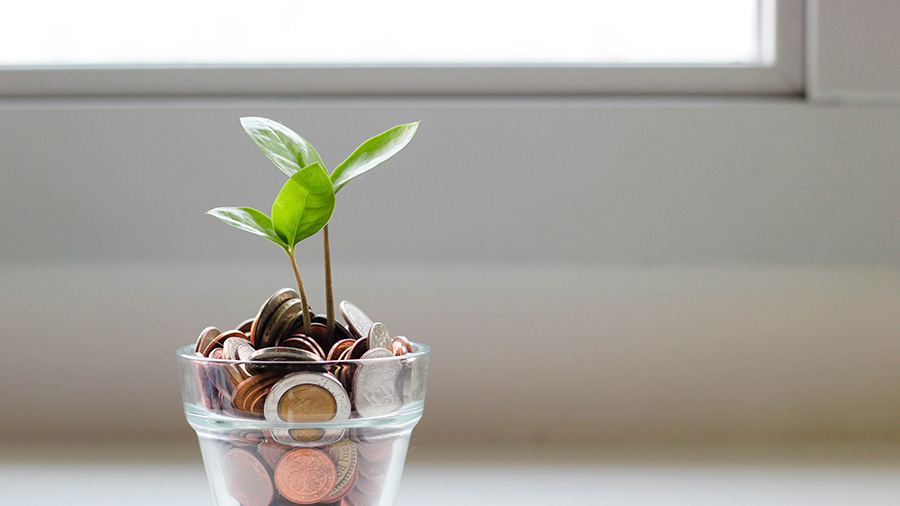Economic Indicators and India's GDP, FDI, and Trade Trends
Gross Domestic Product growth and forecast
As per the economic survey 2022-23, India’s real gross domestic product (GDP) growth is expected to remain robust in FY23 at seven percent. Further, the country should register GDP growth in the range of 6-6.8 percent in FY24, depending on global headwinds.
The economic survey projects a baseline GDP growth of 6.5 percent in real terms and 11 percent in nominal terms in FY24. The survey states: “despite strong global headwinds and tighter domestic monetary policy, a robust growth forecast for India in the range of 6.5 to seven percent is a reflection of India’s underlying economic resilience; of its ability to recoup, renew and re-energize the growth drivers of the economy.”
|
India’s Economic Growth Remains Resilient |
|||
|
|
Real GDP (INR trillion) |
YoY growth (in percent) |
FY20 level (INR trillion) |
|
FY20 (2nd Revised Estimate (RE)) |
145 |
3.7 |
145 |
|
FY21 (1st Revised Estimate (RE)) |
136 |
-6.6 |
145 |
|
FY22 (Previous Estimate (PE)) |
147 |
8.7 |
145 |
|
FY23 (1st Advanced Estimate (AE)) |
158 |
7.0 |
145 |
Growth in credit lending to the MSME sector (medium, small, and micro enterprises) has been the responsible for boosting growth. During the period between January to November 2022, credit lending to MSMEs averaged 30.5 percent.
Foreign Direct Investment trends
India’s Foreign Trade Policy (FTP) with effect from April 1, 2023, will not have a five-year target date. The goal is to reach US$2 trillion exports by 2030 by shifting from an incentive to remission and entitlement-based regime.
India has witnessed steady growth in its domestic market over the last decade, leading to a rise in foreign direct investment (FDI) and prioritizing the establishment of the fundamental blocks necessary for long-term and viable economic development. Additionally, India has improved its rankings in the global innovation index and the ease of doing business index, indicating a positive outlook for further economic expansion. Moreover, India’s domestic market has been growing steadily, providing a solid foundation for further economic expansion.
India received the highest annual FDI inflows of $84,835 million in FY 21-22 overtaking last year’s FDI by $2.87 billion. Also, FDI equity inflow in FY 2021-22 were $ 59,825 million.
FDI Equity inflow in manufacturing sectors have increased by 76% in FY 2021-22 ($ 21.34 bn) compared to previous FY 2020-21 ($ 12.09 billion).
Total FDI inflows in the country in the FY 2022 (April - December) is $ 55.27 billion and total FDI equity inflows stands at $ 36.74 Billion.
Singapore (27.01%), USA (17.94%), Mauritius (15.98%), Netherland (7.86%) and Switzerland (7.31%) emerge as top 5 countries for FDI equity inflows into India FY 2021-22.
Top 5 sectors receiving highest FDI Equity Inflow during FY 2021-22 are Computer Software & Hardware (24.60%), Services Sector (Fin., Banking, Insurance, Non Fin/Business, Outsourcing, R&D, Courier, Tech. Testing and Analysis, Other) (12.13%), Automobile Industry (11.89%), Trading 7.72% and Construction (Infrastructure) Activities (5.52%).
Top 5 States receiving highest FDI Equity Inflow during FY 2021-22 are Karnataka (37.55%), Maharashtra (26.26%), Delhi (13.93%), Tamil Nadu (5.10%) and Haryana (4.76%)
India’s import and export statistics
India is projected to achieve a total export figure of US$760 billion by the end of FY 2022-23, up from US$676 billion recorded in FY 2021-22.
In FY 2022, the total value of goods and services exports for India had reached a high of US$422 billion and US$254 billion, respectively. As of March 28, 2023, India’s Commerce Minister, Piyush Goyal announced that Indian exports had crossed the US$750 billion mark - a phenomenal 35 percent increase from US$500 billion recorded in financial year (FY) 2020–2021.
India’s trade statistics have amplified exponentially in the recent years, with financial year 2021-22 (FY 2022) recording the highest ever value of merchandise exports. The government is buoyant about hitting the US$500 billion export target in FY 2023 through rupee-denominated trade and various recent bilateral free trade agreements (FTAs), such as those signed with the United Arab Emirates (UAE) and Australia.
In FY 2022, merchandise exports from India reached a new high at US$417.81 billion, marking a surge of 43.18 percent over the US$291.18 billion recorded in FY 2021. During the same period, India’s merchandise imports soared to US$610.22 billion, an increase of 54.71 percent over the U$394.44 billion registered during FY 2021.
|
India’s Top Trading Partners in FY 2021-22 (in US$ Million) |
||||
|
Country |
Export |
Import |
Total trade |
Trade balance |
|
US |
76,167.01 |
43,314.07 |
119,481.08 |
32,852.94 |
|
China |
21,259.79 |
94,570.57 |
115,830.36 |
-73,310.78 |
|
UAE |
28,044.88 |
44,833.48 |
72,878.36 |
-16,788.60 |
|
Saudi Arabia |
8,758.94 |
34,100.58 |
42,859.52 |
-25,341.64 |
|
Iraq |
2,403.27 |
31,927.05 |
34,330.33 |
-29,523.78 |
|
Singapore |
11,150.61 |
18,962.19 |
30,112.80 |
-7,811.58 |
|
Hong Kong |
10,984.80 |
19,096.61 |
30,081.41 |
-8,111.81 |
|
Indonesia |
8,471.51 |
17,702.83 |
26,174.34 |
-9,231.31 |
|
Korea Rp |
8,085.03 |
17,477.20 |
25,562.24 |
-9,392.17 |
|
Australia |
8,283.13 |
16,756.17 |
25,039.30 |
-8,473.04 |
|
Germany |
9,883.34 |
14,968.10 |
24,851.43 |
-5,084.76 |
|
Switzerland |
1,348.57 |
23,392.32 |
24,740.89 |
-22,043.76 |
|
Japan |
6,176.77 |
14,399.77 |
20,576.54 |
-8,222.99 |
|
Belgium |
10,084.37 |
9,951.65 |
20,036.02 |
132.72 |
|
Malaysia |
6,995.04 |
12,424.20 |
19,419.24 |
-5,429.16 |
|
Bangladesh |
16,156.37 |
1,977.93 |
18,134.30 |
14,178.44 |
|
UK |
10,461.29 |
7,017.78 |
17,479.07 |
3,443.51 |
|
South Africa |
6,085.29 |
10,965.81 |
17,051.10 |
-4,880.52 |
|
Netherland |
12,543.69 |
4,478.10 |
17,021.79 |
8,065.59 |
|
Thailand |
5,751.30 |
9,332.59 |
15,083.88 |
-3,581.29 |
|
Qatar |
1,837.75 |
13,193.70 |
15,031.45 |
-11,355.95 |
|
Nigeria |
4,663.17 |
10,291.58 |
14,954.75 |
-5,628.40 |
|
Vietnam |
6,702.67 |
7,438.52 |
14,141.19 |
-735.85 |
|
Italy |
8,180.76 |
5,048.47 |
13,229.22 |
3,132.29 |
|
Russia |
3,254.68 |
9,869.99 |
13,124.68 |
-6,615.31 |
The top exports of India are engineering goods, gems and jewelry, petroleum products, drugs and pharmaceuticals, organic chemicals, electronic goods, etc.
India’s import basket primarily comprises petroleum and crude products, electronic goods, gold, machinery and electrical appliances, pearls, stones and semi-precious metals, transport equipment, etc.

| India Economic Profile (1990-2020) | ||||
| 1990 | 2000 | 2010 | 2020 | |
| World view | ||||
| Population, total (millions) | 873.28 | 1,056.58 | 1,234.28 | 1,380.00 |
| Population growth (annual %) | 2.1 | 1.8 | 1.4 | 1 |
| Surface area (sq. km) (thousands) | 3,287.30 | 3,287.30 | 3,287.30 | 3,287.30 |
| Population density (people per sq. km of land area) | 293.7 | 355.4 | 415.1 | 464.1 |
| Poverty headcount ratio at national poverty lines (% of population) | 45.3 | .. | 21.9 | .. |
| Poverty headcount ratio at $1.90 a day (2011 PPP) (% of population) | 47.6 | .. | 22.5 | .. |
| GNI, Atlas method (current US$) (billions) | 334.59 | 467.08 | 1,505.74 | 2,625.44 |
| GNI per capita, Atlas method (current US$) | 380 | 440 | 1,220 | 1,900 |
| GNI, PPP (current international $) (billions) | 1,035.65 | 2,190.69 | 5,173.30 | 9,452.69 |
| GNI per capita, PPP (current international $) | 1,190 | 2,070 | 4,190 | 6,920 |
| People | ||||
| Income share held by lowest 20% | 8.9 | .. | 8.1 | .. |
| Life expectancy at birth, total (years) | 58 | 63 | 67 | 70 |
| Fertility rate, total (births per woman) | 4 | 3.3 | 2.6 | 2.2 |
| Adolescent fertility rate (births per 1,000 women ages 15-19) | 99 | 67 | 35 | 11 |
| Contraceptive prevalence, any methods (% of women ages 15-49) | 45 | 47 | 55 | .. |
| Births attended by skilled health staff (% of total) | 34 | 43 | 52 | .. |
| Mortality rate, under-5 (per 1,000 live births) | 126 | 92 | 58 | 34 |
| Prevalence of underweight, weight for age (% of children under 5) | 52.8 | 46.3 | .. | 33.4 |
| Immunization, measles (% of children ages 12-23 months) | 56 | 56 | 82 | 95 |
| Primary completion rate, total (% of relevant age group) | 64 | 71 | 93 | 95 |
| School enrollment, primary (% gross) | 91.4 | 94.3 | 109.1 | 99.9 |
| School enrollment, secondary (% gross) | 37 | 45 | 63 | 75 |
| School enrollment, primary and secondary (gross), gender parity index (GPI) | 1 | 1 | 1 | 1 |
| Prevalence of HIV, total (% of population ages 15-49) | .. | .. | .. | .. |
| Environment | ||||
| Forest area (sq. km) (thousands) | 639.4 | 675.9 | 695 | 721.6 |
| Terrestrial and marine protected areas (% of total territorial area) | .. | .. | .. | 3.5 |
| Annual freshwater withdrawals, total (% of internal resources) | 36.1 | 44.3 | 44.8 | 44.8 |
| Urban population growth (annual %) | 3 | 2.5 | 2.5 | 2.3 |
| Energy use (kg of oil equivalent per capita) | 350 | 417 | 562 | .. |
| CO2 emissions (metric tons per capita) | 0.64 | 0.89 | 1.35 | 1.8 |
| Electric power consumption (kWh per capita) | 272 | 394 | 640 | .. |
| Economy | ||||
| GDP (current US$) (billions) | 320.98 | 468.39 | 1,675.62 | 2,622.98 |
| GDP growth (annual %) | 5.5 | 3.8 | 8.5 | -8 |
| Inflation, GDP deflator (annual %) | 10.7 | 3.6 | 10.5 | 4.6 |
| Agriculture, forestry, and fishing, value added (% of GDP) | 27 | 22 | 17 | 18 |
| Industry (including construction), value added (% of GDP) | 27 | 27 | 31 | 23 |
| Exports of goods and services (% of GDP) | 7 | 13 | 22 | 18 |
| Imports of goods and services (% of GDP) | 8 | 14 | 27 | 18 |
| Gross capital formation (% of GDP) | 29 | 27 | 40 | 28 |
| Revenue, excluding grants (% of GDP) | 12.4 | 11.7 | 13.2 | 13.2 |
| Net lending (+) / net borrowing (-) (% of GDP) | -3.4 | -3.8 | -3.5 | -2.3 |
| States and markets | ||||
| Time required to start a business (days) | .. | .. | 33 | 18 |
| Domestic credit provided by financial sector (% of GDP) | .. | .. | .. | .. |
| Tax revenue (% of GDP) | 10 | 8.8 | 10.4 | 12 |
| Military expenditure (% of GDP) | 3.1 | 2.9 | 2.9 | 2.9 |
| Mobile cellular subscriptions (per 100 people) | 0 | 0.3 | 60.9 | 83.6 |
| Individuals using the Internet (% of population) | 0 | 0.5 | 7.5 | 41 |
| High-technology exports (% of manufactured exports) | .. | .. | 8 | 10 |
| Statistical Capacity Score (Overall Average) (scale 0 - 100) | .. | .. | 81 | 77 |
| Global links | ||||
| Merchandise trade (% of GDP) | 13 | 20 | 34 | 25 |
| Net barter terms of trade index (2000 = 100) | 86 | 100 | 93 | 100 |
| External debt stocks, total (DOD, current US$) (millions) | 83,472 | 101,131 | 290,428 | 564,179 |
| Total debt service (% of exports of goods, services and primary income) | 33 | 17.1 | 6.8 | 15 |
| Net migration (thousands) | -553 | -1,889 | -2,350 | -2,663 |
| Personal remittances, received (current US$) (millions) | 2,384 | 12,883 | 53,480 | 83,149 |
| Foreign direct investment, net inflows (BoP, current US$) (millions) | 237 | 3,584 | 27,397 | 50,611 |
| Net official development assistance received (current US$) (millions) | 1,395.00 | 1,383.40 | 2,831.30 | 2,610.60 |







